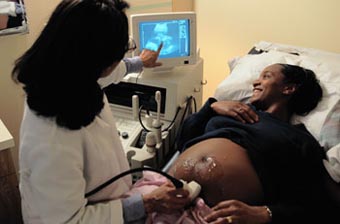Most hospitals in the United States were founded as not-for-profit organizations. That designation is significant because:
- Hospitals are exempt from certain taxes.
- Hospitals provide benefits to the community in return for their exemption from taxes.
At Halifax Regional, we track the value of our benefits to ensure that the community is receiving value in return for our tax exempt status. For the year ending September 30, 2011 Community Benefits totaled $7,242,637.

What is a Community Benefit?
Programs and services that increase access to healthcare, improve the health of communities, and educate health professionals are considered community benefits. Major elements of our community benefits program include charity care, unreimbursed costs for treating Medicare and Medicaid patients, community health improvement services, cash and in-kind contributions to community groups.
- We have calculated our community benefits at $12,106,568 million for 2015.
- In addition, the costs for 2015 bad debt totaled $4,168,152.
- To view a detailed report in a pop-up window, click here.
The Value of Community Benefits
The value of the community benefits is more than what is reflected in the numbers. Halifax Regional plays additional roles in the community:
- Halifax Regional is open 24/7, regardless of how many people seek treatment.
- We are always at the ready, but there is no payment until a patient arrives with a need.
- Halifax Regional is the area’s safety net.
- We care for all patients who seek emergency care, regardless of ability to pay.
- Halifax Regional is prepared to care for disasters (e.g., accidents, natural disasters, epidemics, and terrorist actions).
- There is no funding available for this standby role.
- Halifax Regional is a major factor in the local economy, providing nearly 1,000 full- and part-time jobs with a payroll of approximately $50 million.
- Halifax Regional contributes to community organizations, including the United Way, Roanoke Valley Medical Ministries, and the Chamber of Commerce, among others.
- As a full-service community medical center, Halifax Regional is important for the economic development efforts of the region.
What Does “Not-for-profit” Mean?
“Not-for-profit” means that the Medical Center is exempt from certain taxes. However, Halifax Regional should earn a profit, defined as excess of revenue over expenses for a fiscal year. We refer to it as our “margin.”
- Every organization—for-profit or not-for-profit—needs to have money left over at the end of the year. We cannot fulfill our mission without earning a “margin.”
- The difference between for-profit and not-for-profit is what is done with the “margin” money.
- As a not-for-profit organization, Halifax Regional invests any money remaining at the end of the year to improve the healthcare of the community.
- That money is used in many ways, including the purchase of equipment, developing/expanding new services, and hiring additional staff.
|
Medical Financial Assistance
In fulfilling its charitable mission, Halifax Regional recognizes that medical care is needed for patients who are unable to pay for their services. We have developed a Medical Financial Assistance and Collections Program to assure that patients who are unable to pay for care receive emergency medical services. Click here to read more.

Details & Definitions
Bad debt is included in the report because much of hospitals’ bad debt is undocumented charity care. While all businesses incur bad debt expenses, hospitals are different in that they continue to provide services to people who cannot or will not pay. Bad debt is the cost that hospitals incur as a result of services provided to patients from whom payment was expected but not received, after attempts were made to collect the amount due.
Charity care is the free or discounted care provided by hospitals to individuals who are uninsured or underinsured as a result of limited coverage and high deductibles and co-pays.

Medicaid shortfall is the amount by which hospitals are underpaid by the state for the care provided to Medicaid patients.
Medicare shortfall is the amount by which hospitals are underpaid by the federal government for care provided to Medicare patients, who are 65 and older, regardless of income or disability. |